- Mia

Harry Collins
Answered on 8:14 am
For 100G mode with QPSK modulation, the FEC type could be oFEC (OpenROADM) or SDFEC (Soft Decision FEC) with probabilistic constellation shaping.
For 200G mode with QPSK modulation, the FEC type could be SDFEC with probabilistic constellation shaping.
For 400G mode with 16-QAM modulation, the FEC type could be SDFEC with probabilistic constellation shaping.
The 400G-BIDI module can work in different ways depending on the switch and the application. It can use different types of FEC (Forward Error Correction) to improve the signal quality. FEC is a method of adding extra bits to the data to detect and correct errors.
One way is to use the 400G-SR4.2 or 4x 100G-SR1.2 mode, where the switch does the FEC and the module does not. The FEC used here is called KP-FEC, which is a type of Reed-Solomon FEC.
Another way is to use the 4x 100G-BIDI (100G-SRBD) mode, where the module does the FEC and the switch does not. The module uses a different FEC for each pair of fibers, which can work with the existing 100G-BIDI modules. This way, you can keep using your old 100G-BIDI modules with the new 400G-BIDI modules.
People Also Ask
NVIDIA Launches Spectrum-XGS Ethernet Technology: From Scale-Up/Out to Cross-Domain Scaling!
In the lead-up to the 2025 Hot Chips conference, NVIDIA officially unveiled the Spectrum-XGS Ethernet technology. This innovative solution, based on network optimization algorithms, introduces “scale-across” capabilities, breaking through the power and space physical limitations of single data centers. It connects multiple data centers distributed across different cities and countries
1.6 T Optical Module Production Line TX Parallel Testing: A Comprehensive Guide
In the fast-paced realm of high-speed optical communications, major optical module manufacturers are leveraging 4-channel optical sampling oscilloscopes to enhance TX testing efficiency for 400G, 800G, and 1.6 T modules. However, due to the architectural differences between 4-channel and single-channel TX testing, extra attention to details is essential. Otherwise, even after
Scale Out vs Scale Up: Insights into AI Network Architectures for 2028
As a leading specialist in optical-communication products and solutions, FiberMall is dedicated to providing cost-effective options for global data centers, cloud computing, enterprise networks, access networks, and wireless systems. With our expertise in AI-enabled communication networks, we’re the perfect partner for those seeking high-quality, value-driven optical-communication solutions. In this blog,
Understanding Optical Transceiver Modules: A Comprehensive Guide to Technical Parameters
In the world of fiber optic communications, optical transceiver modules play a pivotal role as interfaces that convert electrical signals to optical signals and vice versa. If you’re dealing with data centers, telecommunications, or AI networking, grasping the key parameters of an optical transceiver module is essential. This blog post dives deep
Spine-Leaf vs. Traditional Three-Tier Architecture: Comprehensive Comparison and Analysis
Introduction Evolution of Data Center Networking Over the past few decades, data center networking has undergone a massive transformation from simple local area networks to complex distributed systems. In the 1990s, data centers primarily relied on basic Layer 2 switching networks, where servers were interconnected via hubs or low-end switches.
AMD: Pioneering the Future of AI Liquid Cooling Markets
In the rapidly evolving landscape of AI infrastructure, AMD is emerging as a game-changer, particularly in liquid cooling technologies. As data centers push the boundaries of performance and efficiency, AMD’s latest advancements are setting new benchmarks. FiberMall, a specialist provider of optical-communication products and solutions, is committed to delivering cost-effective
Related Articles
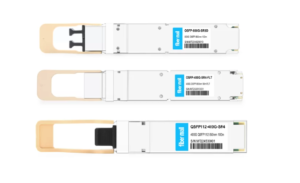
800G SR8 and 400G SR4 Optical Transceiver Modules Compatibility and Interconnection Test Report
Version Change Log Writer V0 Sample Test Cassie Test Purpose Test Objects:800G OSFP SR8/400G OSFP SR4/400G Q112 SR4. By conducting corresponding tests, the test parameters meet the relevant industry standards, and the test modules can be normally used for Nvidia (Mellanox) MQM9790 switch, Nvidia (Mellanox) ConnectX-7 network card and Nvidia (Mellanox) BlueField-3, laying a foundation for
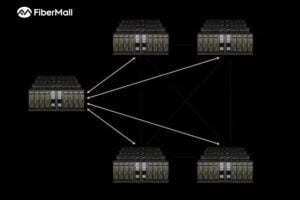
NVIDIA Launches Spectrum-XGS Ethernet Technology: From Scale-Up/Out to Cross-Domain Scaling!
In the lead-up to the 2025 Hot Chips conference, NVIDIA officially unveiled the Spectrum-XGS Ethernet technology. This innovative solution, based on network optimization algorithms, introduces “scale-across” capabilities, breaking through the power and space physical limitations of single data centers. It connects multiple data centers distributed across different cities and countries
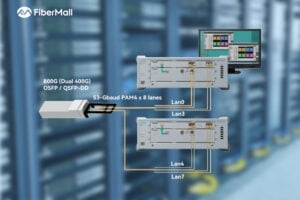
1.6 T Optical Module Production Line TX Parallel Testing: A Comprehensive Guide
In the fast-paced realm of high-speed optical communications, major optical module manufacturers are leveraging 4-channel optical sampling oscilloscopes to enhance TX testing efficiency for 400G, 800G, and 1.6 T modules. However, due to the architectural differences between 4-channel and single-channel TX testing, extra attention to details is essential. Otherwise, even after
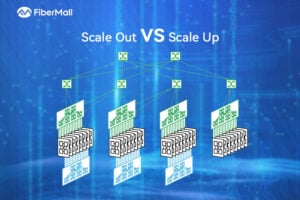
Scale Out vs Scale Up: Insights into AI Network Architectures for 2028
As a leading specialist in optical-communication products and solutions, FiberMall is dedicated to providing cost-effective options for global data centers, cloud computing, enterprise networks, access networks, and wireless systems. With our expertise in AI-enabled communication networks, we’re the perfect partner for those seeking high-quality, value-driven optical-communication solutions. In this blog,
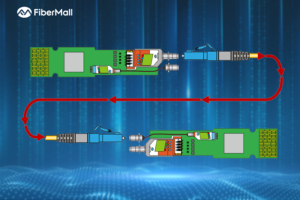
Understanding Optical Transceiver Modules: A Comprehensive Guide to Technical Parameters
In the world of fiber optic communications, optical transceiver modules play a pivotal role as interfaces that convert electrical signals to optical signals and vice versa. If you’re dealing with data centers, telecommunications, or AI networking, grasping the key parameters of an optical transceiver module is essential. This blog post dives deep
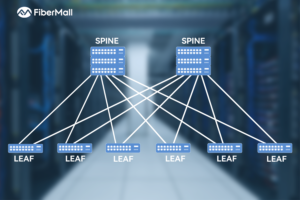
Spine-Leaf vs. Traditional Three-Tier Architecture: Comprehensive Comparison and Analysis
Introduction Evolution of Data Center Networking Over the past few decades, data center networking has undergone a massive transformation from simple local area networks to complex distributed systems. In the 1990s, data centers primarily relied on basic Layer 2 switching networks, where servers were interconnected via hubs or low-end switches.
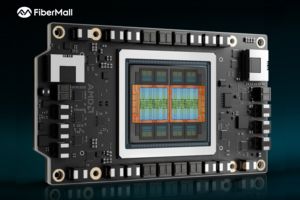
AMD: Pioneering the Future of AI Liquid Cooling Markets
In the rapidly evolving landscape of AI infrastructure, AMD is emerging as a game-changer, particularly in liquid cooling technologies. As data centers push the boundaries of performance and efficiency, AMD’s latest advancements are setting new benchmarks. FiberMall, a specialist provider of optical-communication products and solutions, is committed to delivering cost-effective
